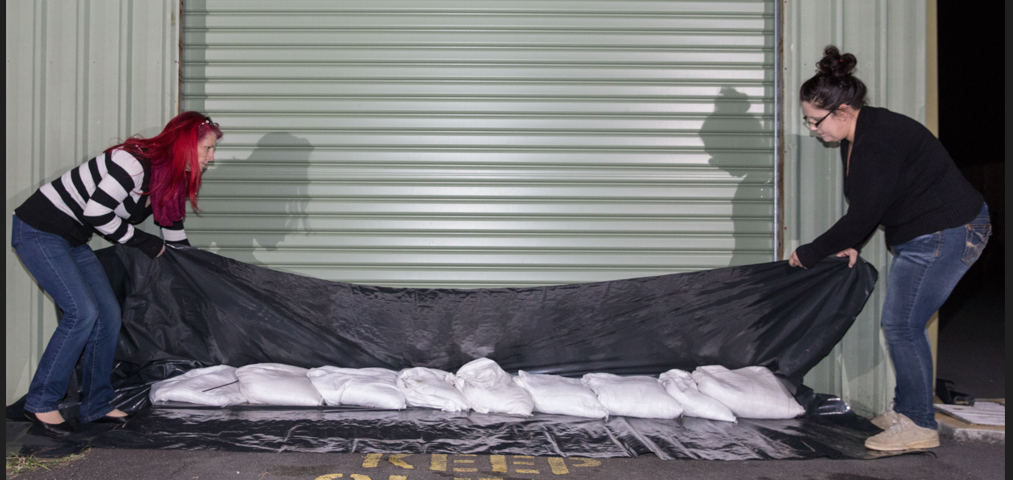Laying sandbags
Sandbags should be placed over floor drains and drainage holes, like showers, in laundries or bathrooms. This can help prevent backflow of contaminated water. Sandbags should also be used in front of doorways, roller doors and brickwork vents.
- If possible build the base of your sandbag wall against a structure to prevent the sandbags from moving due to pressure from the floodwater.
- Place down a layer of plastic sheeting to act as the water proofing skin.
- Flatten and lay sandbags like brickwork with the long edge facing the flow of water on top of the plastic sheeting.
- Ensure the unfilled open part of the bag is covered by the next bag and tuck the flap under the bag at the end of the row.
- Stagger rows so that the joins do not line up and weave plastic sheeting or tarp under the sandbags.

Disposing of sandbags
- Care should be taken when handling wet sandbags, sturdy gloves should be worn as floodwater can contain chemicals, harmful waste and contaminates.
- Used sandbags that have not come into contact with oil or other contaminants can be opened and the sand scattered on lawns and gardens as topsoil, where it will not wash into storm water drains.
- The empty bags should be placed in the general waste bin.
- Sandbags that have come into contact with floodwaters need to be thrown away and can be disposed of at Council waste facilities.
- Don’t return used sandbags to the depot or place full sandbags that have been used in the general waste bin.
Storing sandbags
It is not advisable to store pre-filled sandbags as they can rot.
Empty sandbags can be stored in a dry place out of the sun.
What else can I do to protect my home or business?
- Secure objects that could float away.
- Be prepared to stack furniture and possessions up high out of the way of floodwaters.
- Turn off power and gas.
For other ways to protect your home and family during a flood, see Disaster and emergency.
For more information about using sandbags, visit the State Emergency Service Queensland website.
DIY sandbag alternatives
If traditional sandbags are not available, DIY options can be effective in an emergency. They can provide a quick and temporary solution when traditional sandbags are not available.
Example DIY alternatives
- Heavy-duty garbage bags: Fill with sand or soil, seal tightly and stack like sandbags.
- Old pillowcases: Fill with sand or soil. They are strong and can be easily filled and stacked to form a barrier.
- Tarpaulins: Spread on the ground, fill with sand or soil, and fold over to create a barrier.
Examples of fillers for DIY Sandbags
- Soil from the garden
- Potting mix
- Gravel and small rocks
- Absorbent materials like kitty litter, blankets, old clothes or rags.